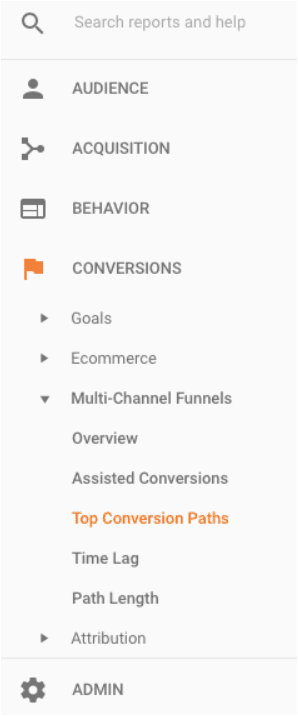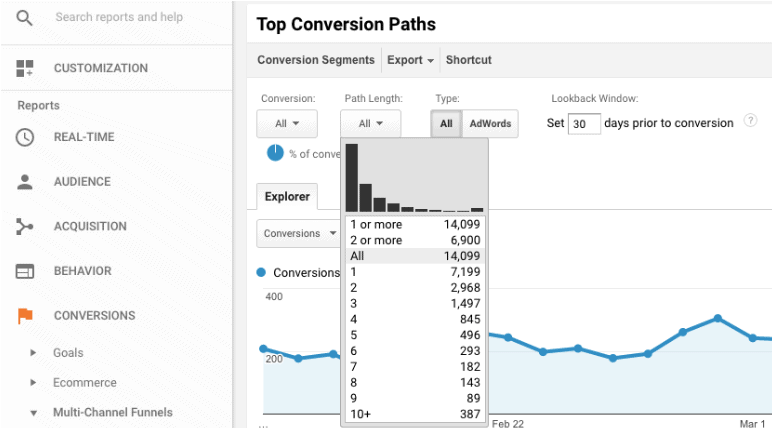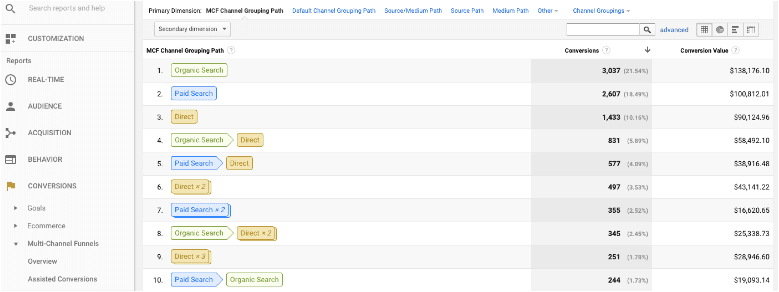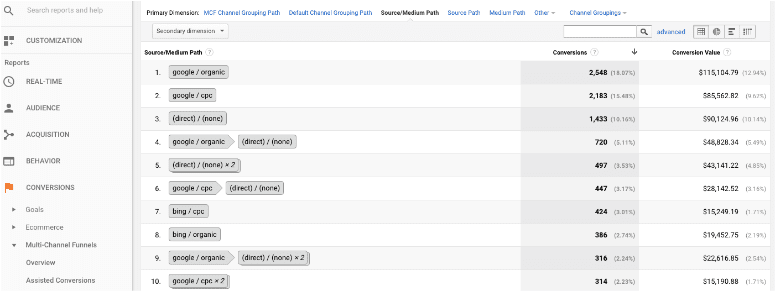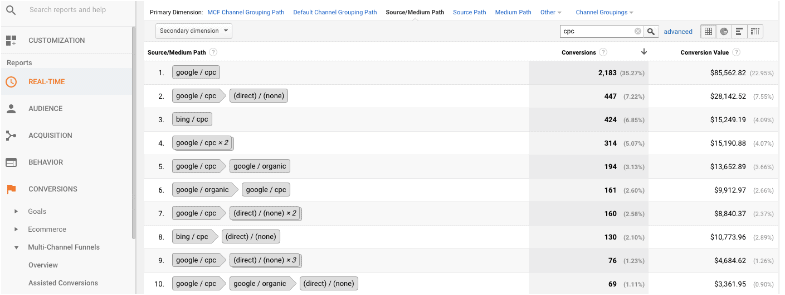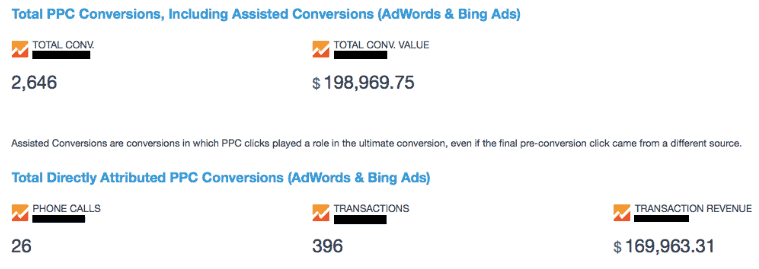Do you use Google Analytics’ Top Conversion Paths Report? If you don’t, you might not be reporting $1,000s of extra value your PPC campaigns are driving. PPC specialist John Horn shares best practices and techniques to get the most out of this valuable report.
Why Use Google Analytics?
Before we show you how to find and use the Top Conversion Paths report to find that extra value, let’s talk for a minute about why you should be using Google Analytics for your clients.
At StubGroup Advertising, we use Google Analytics to combine performance data from the multiple PPC channels we manage for our clients, and we use Swydo to report on that data for many of our clients. Through these reports we’re able to highlight the value we bring our clients, and provide actionable data they can make decisions upon.
Direct vs. Assisted Conversions
Most of Google Analytics’ reports are based on last-click attribution.
This means that when a conversion takes place on a website, Google Analytics credits that conversion to the last click to the website.
Example: Jane clicks a Google ad and visits your client’s website. She leaves without placing an order. The next day she Googles your client’s business name, clicks the Organic result, and places an order. Google Analytics will attribute that order to the “Organic” medium.
There is one exception to this rule. If someone visits the website by typing in the URL, Google Analytics credits the conversion to the last channel the person used to get to the website prior to typing in the URL. If there was no previous channel, the conversion gets credited to the “Direct” medium.
Example: Bob clicks a Google ad and visits your client’s website. He browses a few pages but leaves before filling out your form. Later that day he types your client’s URL into his browser, spends some more time on the site, and fills out the form. Google Analytics will attribute that form submission to the “cpc” medium.
Last click attribution means any interactions earlier in the conversion funnel don’t receive proper credit. That is why looking at assisted conversions is so incredibly important for digital agencies to track and explain to clients.
Use Top Conversion Path to Identify Full Value
More than 70% of consumers use three or more channels when researching a purchase. That means that if you’re only reporting conversions that happened when a click on an ad was the last way the converter got to your website, you’re probably not reporting lots of conversions that you helped drive.
Here’s how to use the Top Conversion Paths report in Google to find all of the conversions you had a hand in driving.
- Log in to Google Analytics at analytics.google.com
- In the Reporting area, go to Conversions > Multi-Channel Funnels > Top Conversion Paths
Change the Path Length to All. You can use the drop-down option to look at all conversions or to pick specific conversions. The default Lookback Window is 30 days prior to conversions, but if you want to pick a longer window, you can change that.
- By default you’ll see the MCF Channel Grouping Path report, which shows you how many conversions were driven by various combinations of channels.
- You can see the combination of sources/mediums by clicking Source/Medium Path
- You can filter the data to only see paths that include the “cpc” medium.
In the example above you can see that the conversions in rows 5 and 10 were from people who first clicked ads and then came back to the website via Organic searches on Google. That’s $17,014.84 of revenue that won’t be credited to AdWords in the other areas of Google Analytics.
Things to Keep in Mind
- Cross-device conversion is not always successfully tracked. Someone may research a product on their desktop, then makes their purchase on phone, Google doesn’t necessarily recognize that it’s the same person.
- Running campaigns on multiple channels, double counting is possible. According to Google: Assisted Conversion Value is the total value associated with those conversions. As as result, double-counting can occur across rows or across assisted and last conversions. If two conversions occur for a single person, any channel interactions which were in both conversion paths count toward both conversions.
- Keep in mind that in the Top Conversion Paths report, Google Analytics attributes traffic from Display campaigns to a source they call “display”, instead of to “cpc,” so if you’re only filtering by “cpc,” you won’t see conversions from Display campaigns.
- It takes a couple of days for data to get updated in Top Conversion Path Report. At StubGroup, we like to use a buffer of two days, otherwise report data will change.
Use Swydo to Prove Your Value to Clients
You can add KPIs and Widgets to Swydo to report the data from the Top Conversion Paths report.
At StubGroup Advertising, we usually break client reports into two sections:
- Total Conversions, Including Assisted Conversions
- Total Directly Attributed Conversions (based upon last click).
This lets us demonstrate the directly attributed value while also pointing out all of the extra value that we’ve driven by contributing to the journey our client’s customers take before converting.
We have varying degrees of understanding across our clients as to what assisted conversions are and why they are important. We do have some clients who are new to digital marketing and ask “just tell me how many sales came from Facebook” and we’ll need to re-explain that conversion is a path with many touch points along the way.
One of our clients is a large online retailer in the electronics space. We learned that they were evaluating the success of their PPC campaigns by calculating their ROAS based on how many orders were directly attributed to the PPC campaigns (meaning that PPC was the last source of traffic before the order was placed).
We explained to our client that they were missing the value from all the orders where PPC played a role other than the last click. For example, people were finding the products initially via Google Shopping and then searching Google again, clicking an Organic result, and placing the order.
We helped the client realize this additional value they weren’t attributing to their campaigns, and we were able to incorporate this into our campaign ROAS targets so that we could generate more overall revenue for the client.
Go check it out and see if you can prove even more value to your clients!
Bio


